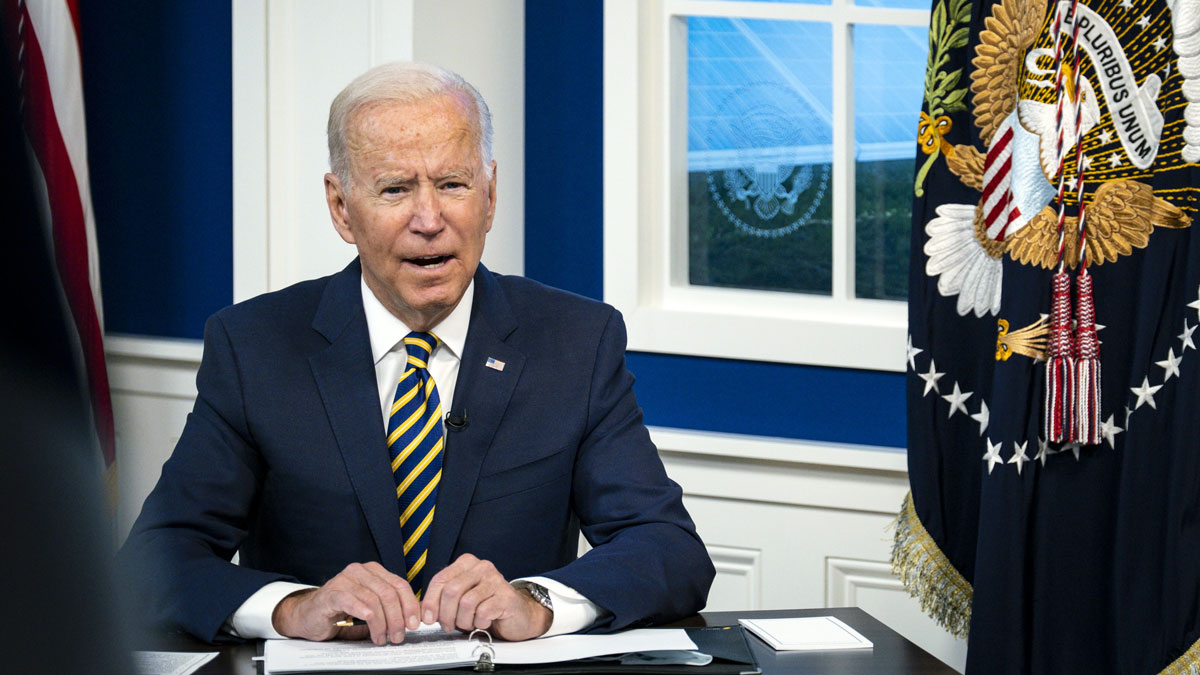President Joe Biden on Global Methane Pledge: At Least 30% Reduction in Methane by 2030
Joe Biden, President of the United States, announced a U.S. and European Union (EU) initiative to reduce global methane emissions by at least 30 per cent from 2020 levels by 2030. The Global Methane Pledge is the first of its kind in the world and represents a new front in global efforts to tackle the climate crisis.
President Biden said the Pledge will be formally announced at COP26 in Glasgow, Scotland, later this year and urged countries to join it, saying the collective goal was “ambitious but achievable”.
“This will not only rapidly reduce the rate of global warming, but it will also produce valuable side benefits like improving public health and agricultural outputs. We’re mobilizing support to help developing countries to join and pledge to do something significant,” Joe Biden said. “We’ve already taken big steps domestically to tackle these emissions and create good paying jobs by plugging the leaks and capping abandoned wells and gas wells.”
Six additional countries have already indicated their support for the Global Methane Pledge. The six countries joining the US and the EU include: Argentina, Ghana, Indonesia, Iraq, Italy, Mexico, and the United Kingdom. These countries include six of the top 15 methane emitters globally and together account for over one-fifth of global methane emissions and nearly half of the global economy.
In the Pledge countries are called on to “support international methane emission reduction initiatives, such as those of the Climate and Clean Air Coalition (CCAC), the Global Methane Initiative (GMI), and the relevant work of the United Nations Environment Programme (UNEP), including the International Methane Emissions Observatory, to advance technical and policy work that will serve to underpin signatories’ domestic actions”.
Inger Andersen, Executive Director of UNEP, welcomed the announcement saying: “As the IPCC’s Sixth assessment report reminded us, cutting methane emissions is the best way to slow climate change over the next 25 years. The Global Methane Pledge has great potential to increase ambition and improve cooperation by countries. UNEP will support efforts to turn commitments into actual emissions reductions through its International Methane Emissions Observatory, and by providing the secretariat to the Climate and Clean Air Coalition.”
“Reducing methane emissions is a critical component in global efforts to keep warming below 1.5˚C. The Global Methane Pledge’s goal to reduce methane by at least 30 per cent below 2020 levels by 2030 will help us achieve this. The Pledge represents a major win for fast action on climate and shows that countries are committed to broadening their efforts to fight the climate crisis. I urge more countries to join it,” Drew Shindell, Special Advisor on Methane Action to the Climate and Clean Air Coalition and Nicholas Professor of Earth Sciences at Duke University, noted.
The right pledge at the right time
The Global Methane Pledge comes at a pivotal time in global efforts to reduce methane emissions. Human-caused methane emissions are growing at an alarming rate. Data released by the United States National Oceanic and Atmospheric Administration in 2021 shows methane emissions spiked in 2020, despite reduced emissions of other air pollutants due to COVID-19 lockdowns. Over the last decade methane emissions have reached five-year growth rates not seen since the 1980s. This increase is driven by three anthropogenic sources: fossil fuels, agriculture, and waste.
Methane is a powerful super climate pollutant approximately 82 times more powerful than carbon dioxide over 20 years. Methane emissions are responsible for 45 per cent of the net warming impact of all human activities through 2019.
In May 2021 the CCAC and UNEP released its Global Methane Assessment (GMA), a landmark report that set out an opportunity to change the climate trajectory within the next 20 years—a critical timeframe for slowing warming and self-reinforcing feedbacks enough to avoid passing dangerous tipping points. More recently, the 6th Assessment Report of the Intergovernmental Panel on Climate Change (IPCC) concluded that methane mitigation is a standout option for achieving near- and long-climate and air quality benefits. According to both reports methane mitigation has the greatest potential to decrease warming over the next 20 years.
The Global Methane Pledge builds on the GMA’s convincing case that together available low-or-negative cost emission reductions measures and behavioral changes could provide reductions that would bring emissions to a 1.5˚C pathway which would avoid 0.3 degrees Celsius of warming by 2050.
Acting on methane has important co-benefits beyond climate. Because methane contributes to the formation of ground-level ozone, a dangerous air pollutant, reducing it can improve public health and agricultural productivity.
Reaching the 30 per cent goal would avoid 205,000 ozone related premature deaths annually in people aged 30 or older and prevent 624,000 asthma-related emergency room visits and respiratory-related hospital admissions per year. It would also prevent millions of tonnes in of staple crop losses each year: wheat – 8 million tonnes, maize – 6 million tonnes, soy – 4.5 million tonnes, and rice – 2.5 million tonnes.
Necessary and achievable
The Pledge’s goal of at least 30 per cent reduction in methane by 2030 sets an ambitious floor to build from. Achieving the Pledge implies reversing the upward trend of methane emissions to an average annual reduction of 4 per cent, a truly blistering pace. From this start efforts to reduce methane are expected to improve and achieve the level of mitigation necessary to achieve global climate goals.
The Pledge is also complementary to global efforts to reduce carbon dioxide. Both gases must be reduced if we are to keep warming to 1.5⁰C. Reducing methane provides an essential complement to global efforts to de-carbonize.
The Global Methane Pledge will serve to garner political attention and commitments, and channel action to existing initiatives and is essential for keeping the 1.5°C goal in sight.
The goal is both achievable and cost-effective. Methane is the only greenhouse gas for which so many ample, cheap, off-the-shelf emission control technologies exist, many of which are zero to low-cost solutions.
Countries have widely varying methane emissions profiles and reduction potential, but all can contribute to achieving the collective global goal through additional domestic methane reduction and international cooperative actions. Major sources of methane emissions include oil and gas, coal, agriculture, and landfills. These sectors have different starting points and varying potential for short-term methane abatement with the greatest potential for targeted mitigation by 2030 in the energy sector.
The reductions needed could be achieved almost completely through measures that target methane directly. These include leak detection and repair for oil and gas systems, increased recovery of gas flared or vented from oil operations, oxidation of methane vented from coal mines, capture, and use of methane from landfills, manure and food waste, and improved water management in rice cultivation. The CCAC and GMI are already working directly with countries to implement these measures globally.
Additional actions that don’t specifically target methane emissions can make up the rest of reductions needed by indirectly reducing methane. These include actions like reducing food waste and loss, moving to renewable energy and more efficient appliances, and actions to decarbonize economies and encourage healthier diets.
The United States, the European Union, and other early supporters will continue to enlist additional countries to join the Global Methane Pledge pending its formal launch at COP 26. The CCAC urges countries to join and looks forward to working with all partners to continue efforts to reduce methane emissions.







